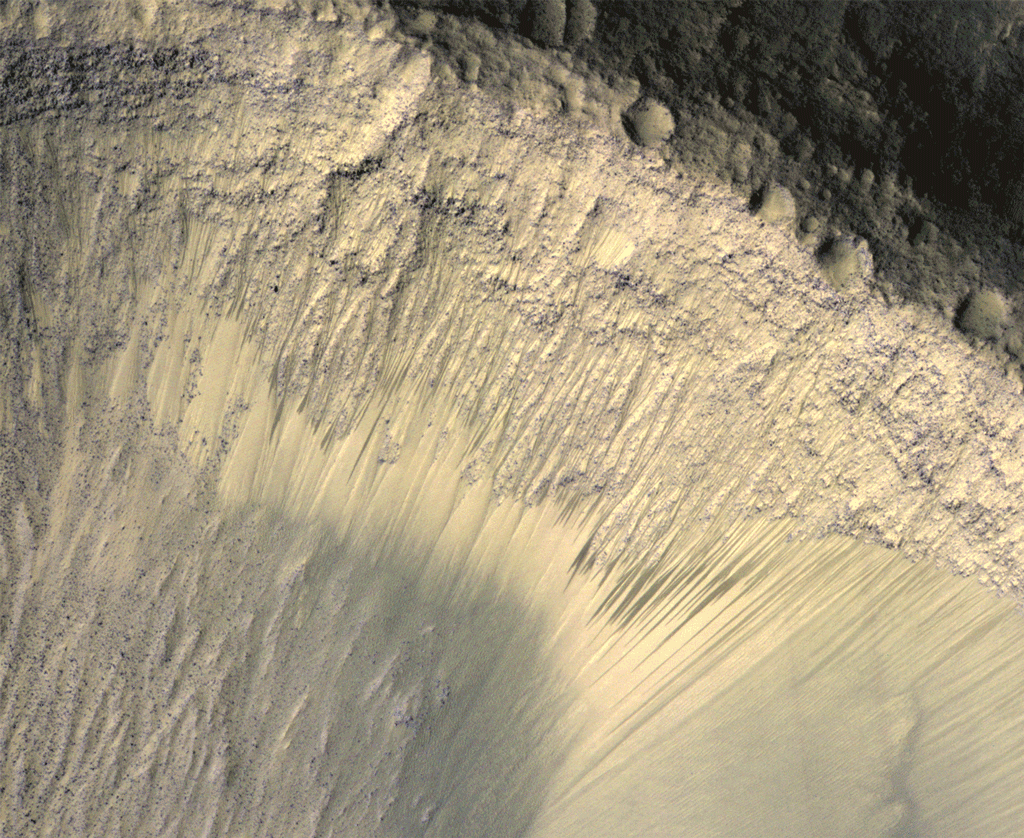1 of 2 | This image shows a long, dark marking, called recurrent slope linea, that advances down Martian slopes in warmer months and fades away in cooler months. (Credit: NASA/JPL-Caltech/Univ. of Arizona)
Dec. 11 (UPI) -- Slender dark markings found on the surface of Mars could have been formed by flowing salt water, said scientists presenting their findings at the American Geophysical Union meeting Tuesday in San Francisco.
The markings, called recurrent slope linea, were captured by NASA's Mars Reconnaissance Orbiter, which has been orbiting the planet capturing data, images and readings used by scientists around the world.
Found near the equator, the markings were 16 feet wide and appear to extend down the slopes during summer, disappear during winter and reappear in the spring. Some of these markings were 4000 feet in length.
"The explanation that fits best is salty water is flowing down the slopes when the temperature rises," said Alfred McEwen of the University of Arizona and principal investigator of the Orbiter. "We still don't have any definite identification of water at these sites, but there's nothing that rules it out, either."
McEwen and his team found five sites in the Valles Marineris, one of the largest canyon systems in the solar system, and found similar markings appearing on north- and south-facing slopes. This flow was seen on the north-facing slopes during the part of the year when they received maximum sunlight, and on south-facing slopes when the season shifted.
Researchers also identified new sites containing water ice. Small asteroids and comets striking the planet leave craters on its surface. Scientists have found the presence of ice in 20 such craters. While five of these were reported in 2009, 15 new ones have been found strewn across latitudes and longitudes, suggesting the wide presence of ice below the surface.
"We've now seen icy craters down to 39 degrees north, more than halfway from the pole to the equator," said Colin Dundas of the USGS. "They tell us that either the average climate over several thousand years is wetter than present or that water vapor in the current atmosphere is concentrated near the surface."
One of the key features scientists are trying to figure out are the dust storms on Mars. These have been shown to affect annual patterns of water vapor and carbon dioxide in the atmosphere, freezing them into the polar ice caps during winter and replenishing the atmosphere during the spring.
[NASA JPL]
[American Geophysical Union]
















